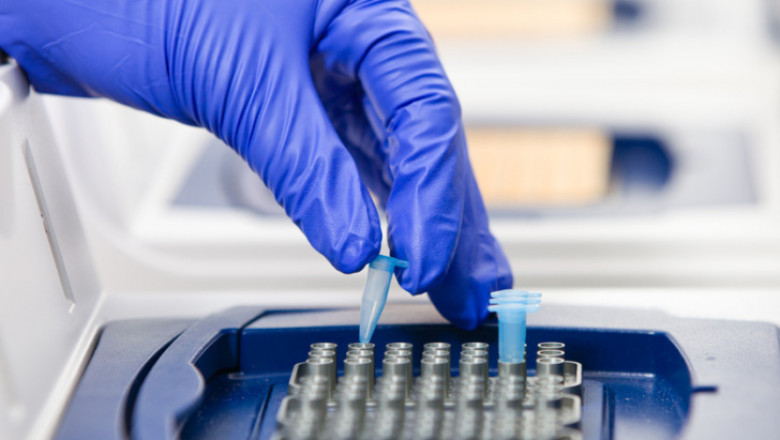views
PCR Bottles Market Forecast: Increasing Retailer Sustainability Mandates Propel Industry-Wide Adoption of Recycled Packaging
The PCR bottles market forecast shows robust growth potential, largely driven by increasing retailer sustainability mandates that are accelerating the shift toward recycled packaging solutions. As global concerns surrounding plastic pollution continue to mount, major retailers and brand owners are setting ambitious sustainability targets that prioritize post-consumer recycled (PCR) materials. This trend is reshaping packaging standards across the food and beverage, personal care, and household product industries—positioning PCR bottles as a central pillar of the global green packaging movement.
Retailer Influence on Sustainable Packaging Decisions
Retailers are playing a pivotal role in pushing the packaging industry toward circularity. Large multinational chains, including Walmart, Target, Tesco, and Carrefour, have established sustainability roadmaps that demand suppliers integrate more recycled content into packaging. These mandates are not simply suggestions—they are often tied to procurement policies, shelf placement, and supplier ratings.
Walmart, for example, has outlined its “Zero Plastic Waste” goal, which includes a commitment to achieve 100% recyclable, reusable, or industrially compostable packaging by 2025. The retailer has encouraged suppliers to use PCR bottles and reduce virgin plastic usage as part of its Project Gigaton initiative. Similarly, Tesco has pledged to remove hard-to-recycle materials and increase the use of PCR in all own-brand products.
These retailer-driven mandates create a ripple effect through the supply chain. Manufacturers and packaging suppliers must adapt quickly to retain contracts, making PCR content integration a strategic imperative. As these sustainability standards tighten, the demand for post-consumer recycled (PCR) bottles is expected to surge across global markets.
Market Forecast Highlights: PCR Bottles Set for Substantial Growth
The global PCR bottles market is forecast to grow at a compound annual growth rate (CAGR) of 6.5% to 8.5% over the next five years. This growth is driven by three primary factors: retailer mandates, consumer demand for sustainable packaging, and regulatory pressure from governments to reduce plastic waste.
North America and Europe are leading the charge, with early adoption of recycled packaging standards and well-established recycling infrastructures. However, Asia-Pacific is emerging as a high-potential market, supported by expanding urban populations, rising environmental awareness, and supportive government policies.
Segment-wise, the personal care and beverage industries represent the highest usage of PCR bottles, followed by household cleaning products and pharmaceuticals. With increasing innovation in food-grade PCR resins, even food and dairy brands are beginning to adopt PCR-based packaging for select SKUs.
Innovation and Investment in PCR Packaging Technologies
To meet growing demand, companies across the packaging ecosystem are investing in advanced recycling technologies, improved collection systems, and better material sorting. These efforts are aimed at producing high-quality, food-safe PCR resin, which has historically been limited in supply.
Technological advances, such as chemical recycling and decontamination processes, are expanding the usability of PCR plastics in sensitive applications. These innovations help maintain product integrity while meeting strict safety and compliance standards, particularly in sectors like food and cosmetics.
Moreover, brands are embracing design for recyclability, ensuring their bottles use mono-materials, standardized labeling, and components that simplify the recycling process. These strategies not only improve the quality of recovered material but also support broader circular economy goals.
Retailer Mandates Create New Competitive Differentiators
Retailer sustainability mandates are not only influencing compliance—but also acting as competitive differentiators. Brands that meet or exceed recycled content thresholds are being rewarded with better shelf visibility, consumer goodwill, and sometimes exclusive partnerships.
Private-label brands, in particular, are leading in PCR adoption due to direct control over packaging decisions and alignment with retailer sustainability KPIs. Additionally, third-party certifications—such as Cradle to Cradle, How2Recycle, and Recycled Content Certification—are gaining traction among manufacturers seeking credibility and transparency in their packaging claims.
Retailers are also tracking supplier performance through ESG scoring systems and online platforms like Walmart’s Supplier Sustainability Index and Tesco’s Packaging Scorecard. These tools help identify leaders and laggards in PCR adoption, further pushing the market toward uniform standards.
Challenges and Supply Chain Constraints
Despite the optimistic forecast, several challenges continue to affect the PCR bottles market. Chief among them is the limited supply of food-grade PCR resin, which is still more expensive and less readily available than virgin plastic in many regions. Without consistent collection and sorting infrastructure, the supply chain for recycled materials remains fragile.
There is also a cost burden associated with redesigning existing packaging lines to accommodate PCR content, especially for small and mid-sized companies. These firms may struggle to access the resources or technical expertise needed to meet retailer mandates efficiently.
Another concern is consumer education and behavior. In many regions, confusion around recycling practices leads to contamination and low recovery rates. Retailers and brands alike are investing in clearer labeling, consumer engagement campaigns, and refill/reuse models to close the loop on packaging waste.
Future Outlook: Collaboration and Commitment Driving Market Forward
Looking ahead, the success of the PCR bottles market will depend on collaboration across the value chain—from resin suppliers and manufacturers to retailers and end consumers. Joint ventures, co-investment in recycling plants, and standardization of PCR quality grades are essential to creating a more resilient and scalable market ecosystem.
Retailers are expected to play an even more assertive role, using their platforms to influence industry norms and drive accountability through transparent reporting and performance tracking. As consumer demand for sustainable packaging continues to rise, retailers and brands that prioritize PCR adoption will be well-positioned to lead in both profitability and purpose.
Conclusion
The PCR bottles market forecast reveals strong growth potential powered by increasing retailer sustainability mandates and a global shift toward recycled packaging. While challenges around supply and cost persist, innovation, regulation, and retail pressure are aligning to accelerate adoption across industries. As more stakeholders commit to sustainability, PCR bottles will play a crucial role in building a circular, low-impact packaging future.





















Comments
0 comment